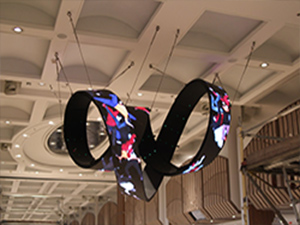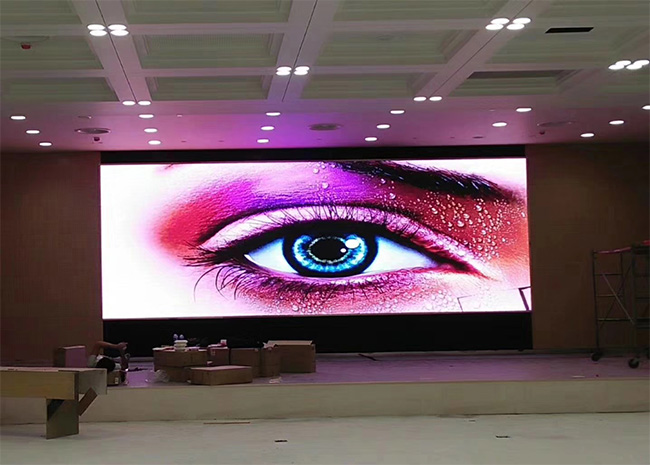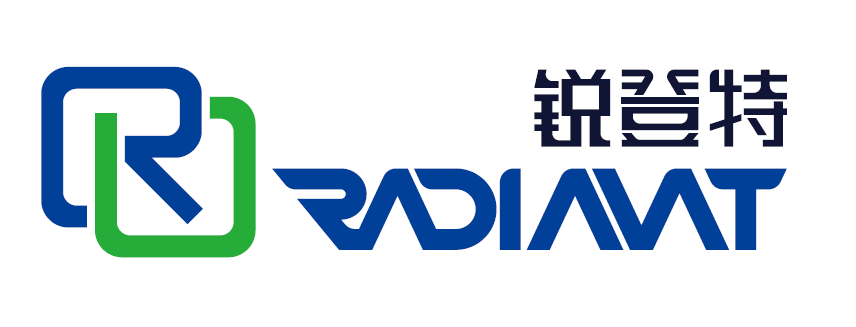Xinhuanet Beijing, May 27th (Zhao Qiuyue) On May 20th, Ouyang Zhongcan, academician of the Chinese Academy of Sciences and director of the Strategic Development Committee of the Institute of Theoretical Physics, accepted an exclusive interview with Xinhuanet. Academician Zhongcan Ouyang suggested that due to the impact of the new crown pneumonia epidemic and global economic factors, relevant departments should continue to support the display industry to become bigger and stronger, and display companies represented by BOE should also maintain strategic determination to promote the development of printing OLED, MicroLED and other technologies. Industrialization process.



The following is the main content of the interview:
Moderator: At present, China has become an important pole of the global display industry. What do you think of the development and technological trends of China's display industry?
Ouyang Zhongcan: The "2020 Global Display Industry Spring Industry Trends Conference" held on May 18 attracted 750,000 people to watch online. Although the new crown pneumonia epidemic has dealt a big blow to the global economy, China's display industry It has been turning crises into opportunities. In addition to traditional applications, the epidemic will also bring some new market demands.
Data from the LCD Branch of the China Optics and Optoelectronics Industry Association shows that the output value of the display industry in mainland China in the first quarter of this year fell by about 2% year-on-year, and the loss was much smaller than that of overseas companies, which means that Chinese companies have strong anti-risk capabilities. With the joint efforts of Chinese entrepreneurs, technicians, and the government, China's display technology has developed simultaneously with the world. LCD technology has surpassed its foreign counterparts. In two years, China's flexible OLED screen output is expected to keep up. China's AMOLED display technology, like the liquid crystal display technology, is also showing a development trend of latecomers.
Under the current circumstances, companies should maintain strategic determination, give full play to their comparative advantages, continue to maintain the necessary R&D investment, and increase the industrialization process of printing OLED, MicroLED and other technologies. The government should continue to support the display industry to grow bigger and stronger, focus on cultivating leading enterprises to stabilize market competition, strengthen the integration process of production, education, research and use, and strive to break through the transformation and upgrading of my country's already-founded display iteration technology.
Moderator: We have noticed that 8K TVs have begun mass production this year. How do you view the 8K prospects?
Ouyang Zhongcan: At present, my country's economy has shifted from high-speed growth to high-quality development. Promoting consumption upgrade is one of the main means to transform the development mode. In March 2019, the "Ultra HD Video Industry Development Action Plan (2019-2022)" was officially released, proposing that the overall scale of China’s UHD industry should reach 4 trillion by 2022. However, the current network construction speed of the three major operators and In terms of model, ultra-high-definition video will still be the first to explode in the video entertainment industry, and the implementation of the Internet of Things and more vertical application scenarios will take a few more years.
Practitioners in the color TV industry see 8K as the only way for future TV development. With the mainstream color TV manufacturers' deployment on 8K TVs, as well as the continuous liberalization of relevant policies and the implementation of 5G commercialization, 8K TV will accelerate its popularity. In the future, 5G+8K will assume more social responsibilities, continue to set off technological changes in various fields, and lead the development of the industry, while also becoming an important driving force for a better life.
The deep integration of 5G technology with sensing, big data, and artificial intelligence technology will strongly promote the comprehensive upgrade of the user experience and integrated functions of the smart display port. BOE's unique ADS super hard screen technology is one of the important core technologies for wide viewing angle display in the world. As an important basis and technical standard for display production and manufacturing, ADS technology can achieve higher transmittance, brightness and contrast, with a viewing angle of 178 degrees up and down, left and right, with lower power consumption and more environmentally friendly advantages. It is the field of liquid crystal display. The most technologically advanced and market-competitive display technology.
ADS has the advantages of good image quality, strong universality, ultra-wide viewing angle, ultra-high color performance, ultra-high-speed motion picture processing, etc., and has been widely used in a full range of high-end products such as mobile phones, computers, and TVs, and has a global market penetration rate Extremely high. At the same time, ADS technology is also suitable for high-resolution products of 8K and above. The high transmittance feature can effectively reduce the cost and power consumption of 8K products, and it has both top image quality and energy saving and environmental protection characteristics.
Moderator: In recent years, innovative applications and products of display technology have been continuously launched. The BOE BD Cell technology adopted by Hisense's multi-screen TV has brought people a new experience. What is your opinion on this type of innovative technology?
Ouyang Zhongcan: The BD Cell series is a brand new technological breakthrough to realize TFT-LCD million-level contrast ultra-high-definition display. Through millions of partitions, pixel-level light control modulation is realized, bringing a shocking HDR experience. The display can achieve a million-level ultra-high static contrast, 12bit color depth, black field brightness as low as 0.003nit, power consumption can be lower than 40% of the same size OLED display, and can clearly restore every color and detail of the picture.
At present, BOE BD Cell products have won many awards at major domestic and foreign exhibitions such as SID, CES, ICDT, and CITE. Hisense's stacked-screen TVs using BD Cell technology have achieved technology comparable to LCD and OLED, but cost more than LG OLED TVs. It is 1/3 cheaper, and the launch of this product is a big event that can allow the Chinese to keep their name in the development history.
Moderator: Flexible display is an important trend in future technology development. What do you think of my country's self-developed GGRB array flexible display technology?
Ouyang Zhongcan: As one of the new semiconductor display technologies, flexible AMOLED displays use flexible substrates instead of traditional glass substrates, and use organic materials that can actively emit light and flexible packaging technology, subverting the original rigid display product form. Achieve various product forms such as bending and folding.
At present, there are two main pixel arrangements for flexible OLED mobile phones on the market, and BOE uses the self-developed GGRB pixel arrangement. The remarkable feature of GGRB is that under the premise of a comparable display effect, the sub-pixel light-emitting area accounts for a larger proportion, which can effectively improve the burn-in problem. Therefore, this technology has a leading advantage in high-resolution products with greater pixel density and has won 2019 China Patent Silver Award. BOE has launched an overall solution for flexible display, including perforated screens, waterfall screens, and folding screens, all of which have been mass-produced and applied to high-end flexible mobile phones such as Huawei, Motorola, LG, OPPO, and Nubia.
Moderator: This year, BOE launched 8K Mini LED backlight display and Mini LED glass-based products. How do you view the Mini LED technology trend?
Ouyang Zhongcan: The 8K Mini LED backlight display realizes the fine control of the LCD backlight, reaching 10,000 partitions and achieving ultra-high contrast, which is very remarkable.
Mini LED glass-based products are directly displayed with LED light, using active driving mode, no flicker, glass has its own advantages in flatness, heat dissipation, etc. By splicing small LED displays, it can achieve super large size, The small-pitch, high-resolution display will have a certain impact on application fields such as commercial displays and public display screens in conference rooms or related enterprises in the LED industry chain.
The layout of the Mini LED glass base is also BOE's transitional research and development towards the future Micro LED display. The single LED of the former is in millimeter size, while the single LED of the latter is smaller than 100 microns.
Moderator: At present, there are more than ten 6-generation flexible AMOLED production lines under construction and planned to be built around the world. Any suggestions for the overall layout of the company in the future?
Ouyang Zhongcan: Objectively speaking, there is still a certain gap between China's flexible AMOLED display technology and South Korea, but it is already developing rapidly, and it is likely to overtake in corners. In the next 3-5 years, China's flexible display technology may usher in a wave of rapid development.
From the current mass production and shipment situation, South Korea's flexible AMOLED display development is the most mature, with the earliest mass production shipment and the largest shipment, accounting for about 90% of the global market share. In 2019, both BOE of China and LGD of South Korea achieved mass production of flexible AMOLED. With the release of production capacity and the increase in yield, it will put a certain competitive pressure on Samsung.
As 9 flexible lines in mainland China have been mass-produced or planned for construction, by around 2021, according to the design capacity, according to the current production yield rate (80%) disclosed by BOE, if it is to cut 5.5 inches on the 6th generation line Flexible mobile phone screen (a piece of glass can cut 228 mobile phone screens). Under the condition of full production, the total annual production capacity of flexible mobile phone screens of domestic panel manufacturers will reach 540 million pieces, which will account for more than 50% of the global flexible display market , To become a flexible display power.
However, considering the technical difficulties of AMOLED, the technical difficulty must be considered carefully before launching in various places. The investment of a 6-generation flexible AMOLED production line is about 40 billion yuan, which has reached the financial income of a small and medium-sized city. If it fails, it will be a big problem. Never mount a horse blindly.
Post time: Oct-12-2020
